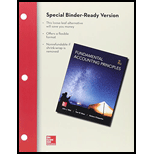
Concept Introduction
Return on assets: Return on Assets (ROA) is an accounting ratio that describes how profitable a company is with respect to its total assets. ROA explains how efficiently the management has utilized the business assets for generating earnings. ROA is calculated by dividing a company’s annual income by the average assets of the company. ROA is described in percentage terms.
Debt Ratio: Debt ratio is a financial ratio that calculates the leverage of the company. It is the ratio of the total debt to the total assets and is represented in percentage terms. The debt ratio explains the amount of debt on the
1.a.
To Compute: The Debt ratio and the return on assets ratio for the data given.
To find: The Company, whose business relies most heavily on creditor financing.
To find: The Company, whose business relies most heavily on equity financing.
To find: Two Companies with greatest risk based on debt ratio.
To find: Two Companies which earn the highest return on assets.
To find: The Company that the investors would most likely prefer based on the risk–return relation.
Want to see the full answer?
Check out a sample textbook solution
Chapter 2 Solutions
Loose Leaf for Fundamentals of Accounting Principles and Connect Access Card
- Please explain the correct approach for solving this general accounting question.arrow_forwardA university's bookstore has an average textbook price of $78.50. Variable costs are $42.75 per textbook and fixed costs total $156,000. How many textbooks must be sold to provide an operating income of $47,500? How many textbooks would have to be sold if fixed costs increased by 15%? (round up calculation to the nearest number)arrow_forwardI need the correct answer to this financial accounting problem using the standard accounting approach.arrow_forward
- Fairview Industries recently purchased 128,000 units of raw material for $576,000. Four units of raw materials are budgeted for use in each finished good manufactured, with the raw material standard set at $24.00 for each completed product. Fairview manufactured 31,250 finished units during the period just ended and used 127,500 units of raw material. If management is concerned about the timely reporting of variances in an effort to improve cost control and bottom-line performance, what would the materials purchase price variance be?arrow_forwardWhat is the direct materials price variance?arrow_forwardI need help finding the accurate solution to this general accounting problem with valid methods.arrow_forward

 AccountingAccountingISBN:9781337272094Author:WARREN, Carl S., Reeve, James M., Duchac, Jonathan E.Publisher:Cengage Learning,
AccountingAccountingISBN:9781337272094Author:WARREN, Carl S., Reeve, James M., Duchac, Jonathan E.Publisher:Cengage Learning, Accounting Information SystemsAccountingISBN:9781337619202Author:Hall, James A.Publisher:Cengage Learning,
Accounting Information SystemsAccountingISBN:9781337619202Author:Hall, James A.Publisher:Cengage Learning, Horngren's Cost Accounting: A Managerial Emphasis...AccountingISBN:9780134475585Author:Srikant M. Datar, Madhav V. RajanPublisher:PEARSON
Horngren's Cost Accounting: A Managerial Emphasis...AccountingISBN:9780134475585Author:Srikant M. Datar, Madhav V. RajanPublisher:PEARSON Intermediate AccountingAccountingISBN:9781259722660Author:J. David Spiceland, Mark W. Nelson, Wayne M ThomasPublisher:McGraw-Hill Education
Intermediate AccountingAccountingISBN:9781259722660Author:J. David Spiceland, Mark W. Nelson, Wayne M ThomasPublisher:McGraw-Hill Education Financial and Managerial AccountingAccountingISBN:9781259726705Author:John J Wild, Ken W. Shaw, Barbara Chiappetta Fundamental Accounting PrinciplesPublisher:McGraw-Hill Education
Financial and Managerial AccountingAccountingISBN:9781259726705Author:John J Wild, Ken W. Shaw, Barbara Chiappetta Fundamental Accounting PrinciplesPublisher:McGraw-Hill Education





